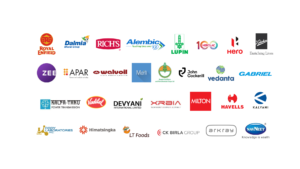Streamlining Warehouse by Unified Package Builder in SAP EWM
Efficient warehouse management is crucial for businesses looking to optimize their supply chain processes. In this pursuit, SAP Extended Warehouse Management (EWM) plays a pivotal role, offering a wide range of tools and functionalities to enhance warehouse operations. One such tool that is making waves in the world of EWM is the Unified Package Builder.
In this blog, we will delve into the concept of the Unified Package Builder in SAP EWM, understanding its significance, benefits, and how it can streamline your warehouse operations.
What is Unified Package Builder?
The Unified Package Builder in SAP EWM is a powerful tool designed to simplify and automate the packaging process within the warehouse. It enables businesses to create optimized packages for outbound shipments, considering various constraints such as weight, volume, and specific packaging requirements. By doing so, it ensures that products are packed efficiently, reducing transportation costs and minimizing the risk of damage during transit.
Key Features and Benefits:
- Optimized Packaging: The Unified Package Builder helps optimize the packaging process by selecting the most suitable packaging materials and creating packages that minimize empty spaces while adhering to weight and volume constraints. This not only reduces transportation costs but also ensures that products are adequately protected during shipment.
- Automation: This tool automates the packaging process, reducing the need for manual intervention. It can consider predefined packaging rules and constraints, making the packing process consistent and error-free.
- Integration with Other EWM Functionalities: The Unified Package Builder seamlessly integrates with other EWM functions, such as order management, picking, and shipping, ensuring that the packaging process is synchronized with the rest of the warehouse operations.
- Cost Reduction: By optimizing the packaging process and reducing the need for excess packaging materials, businesses can significantly lower their operational costs. Additionally, it helps in minimizing shipping costs by ensuring that packages are as space-efficient as possible.
- Enhanced Customer Satisfaction: Accurate and optimized packaging leads to fewer damages during transit, resulting in higher customer satisfaction. Delivering products in good condition is crucial for customer retention and positive reviews.
- Sustainability: By optimizing packaging and reducing waste, businesses contribute to their sustainability goals and environmental responsibility. This is increasingly important in today’s environmentally conscious business landscape.
How Unified Package Builder in SAP EWM Works:
The Unified Package Builder in EWM operates in several steps:
- Packaging Profile Setup: Businesses define packaging profiles that specify the packaging materials, dimensions, and weight limits for different product categories or types.
- Package Building Rules: Companies establish rules that govern how items are to be grouped together for packaging, ensuring that they adhere to weight and volume constraints.
- Automated Package Creation: When an order is received, the system automatically evaluates the packaging profile and applies the package building rules to create the optimal package.
- Packaging Material Selection: The system selects the appropriate packaging materials based on the defined packaging profile and the characteristics of the items to be packaged.
- Monitoring and Adjustments: Users can monitor the packaging process and make manual adjustments if needed, but the system’s automation typically minimizes the need for manual intervention.
Conclusion:
In the world of modern supply chain management, efficient warehouse operations are vital for success. The Unified Package Builder in SAP EWM offers a streamlined and automated solution for optimizing the packaging process. By automating package creation, adhering to weight and volume constraints, and selecting the right packaging materials, this tool helps businesses reduce costs, improve customer satisfaction, and contribute to their sustainability goals.
Read More.


 RECOGNISED WORLD OVER SOLUTIONS
RECOGNISED WORLD OVER SOLUTIONS
 Find out how BSC GLOBAL digitally transformed P2P cycle for worlds renowned brand in Automobile
Find out how BSC GLOBAL digitally transformed P2P cycle for worlds renowned brand in Automobile








